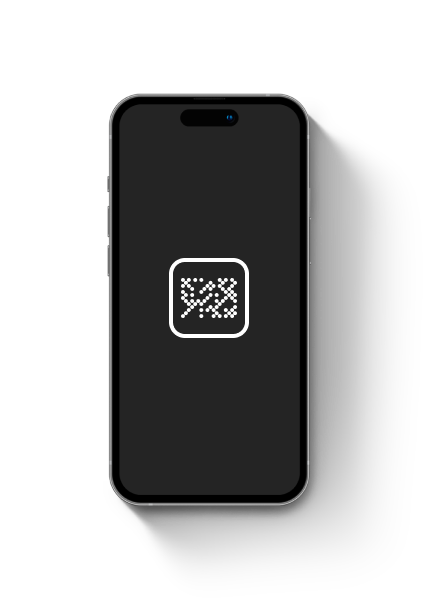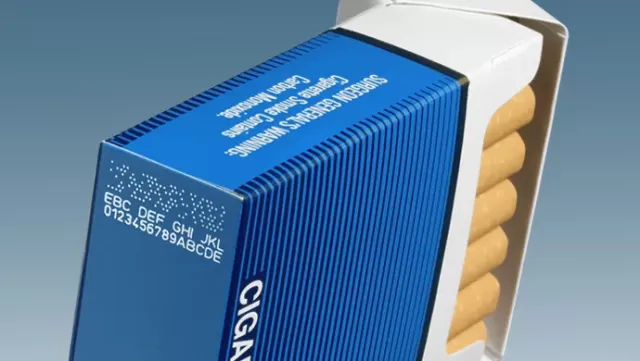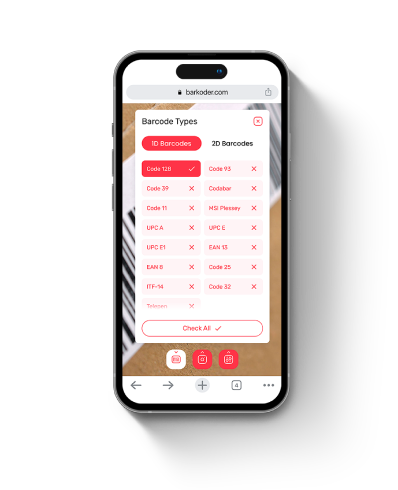DotCode Scanning.
Mobile & Web.
The industry-leading DotCode scanning capabilities of the barKoder Barcode Scanner SDK are now available for all Enterprise & Consumer Mobile & Web Apps.
The industry-leading DotCode scanning capabilities of the barKoder Barcode Scanner SDK are now available for all Enterprise & Consumer Mobile & Web Apps.

DotCode might be one of the fastest-growing barcode formats in terms of adoption in multiple industries, mainly due to the fact that its structure allows it to be utilized in high-speed printing environments, allowing it to be applied via various methods, including industrial inkjet printers and laser coding systems, such as CO2 and fiber lasers.

Moreover, DotCodes can encode data using all 7-bit ASCII (American Standard Code for Information Interchange) characters, as well as all extended 8-bit ASCII characters. Unlike other 2D codes, DotCodes are not technically limited to any functional capacity with regards to data capacity. There is no fundamental maximum capacity to the amount of data that can be stored in a DotCode, though in practice, printers are likely to be restricted to a size limit of 124 dots in either direction.
You can read more about the characteristics and features of the DotCode barcodes here.

Following the issuance of the Tobacco Product Directive TPD II, and in compliance with the global standards set by GS1 for utilization of DotCode in various tobacco applications in order to meet the requirements of the EU Tobacco Traceability Regulation EU 2018/574, DotCode barcodes started to be printed in the entirety of the tobacco manufacturing supply chain, especially on the package level. This DotCode application has made track & tracing of tobacco products a highly-sought solution in both enterprise and consumer-facing applications. In addition, the adoption of DotCode for tobacco applications has further increased its value for various workflow management solutions.
Learn More
Being the robust and suitable barcode symbology that it is, with a clear set of standards, DotCode is gaining ground in another fast-paced production industry, that is in the beverage sector, especially in the manufacturing and packaging of alcohol products. Serialization by incorporating the serial number within a DotCode is already massively being adopted throughout the industry, promoting tracking & tracing as well as authentication applications throughout the supply chain. It is further used for tracking raw materials, monitoring production batches and ensuring compliance with food safety regulations.
Learn More
In logistics DotCode is utilized for tracking packages, pallets and containers throughout the shipping process. It enables companies to streamline operations, improve accuracy and reduce shipping errors. The adoption was already made by all major shipping and postal organizations which utilize it on shipping labels, due to its abilities to withstand high levels of abuse throughout the shipping process and still be reliably scanned.
Learn MoreThe Barcode Scanner SDK supports scanning the most common barcode types, maximizing efficiency for today's most progressive mobile apps.
The barKoder barcode scanning API features the best DotCode reading algorithm by a significant margin when compared to any competitor product in the software-based barcode reading market, be that closed or open-source.
Our internal tests conducted by utilizing the most hard-to-read DotCode barcode samples, numbering 34, puts the barKoder SDK firmly ahead by more than 26,5% then the next high-performing solution.
Scores were made based on reading rate, accuracy, speed, light and scanning angles.




DotCode is a two-dimensional matrix barcode symbology characterized by a unique pattern of dots arranged in a square or rectangular grid. It was developed and released in 2009 to address specific challenges in high-speed production environments, making it a preferred choice for industries requiring efficient, high-density data encoding.
Nov 20, 2025
DotCode is an innovative barcode symbology that provides a compact and visually appealing way to encode data. With its unique pattern of dots, DotCode offers enhanced readability and scanning efficiency, making it an excellent choice for various industries.
Jan 15, 2024
Accuracy and reading rate are vital metrics, especially when it comes to scanning damaged, low-resolution and blurred barcodes often encountered in real-world scenarios, where environmental conditions or wear and tear may compromise their readability. In that regard we conducted a series of tests, with the underlying statistical information and analysis shared publicly in this blog post.
Apr 02, 2024